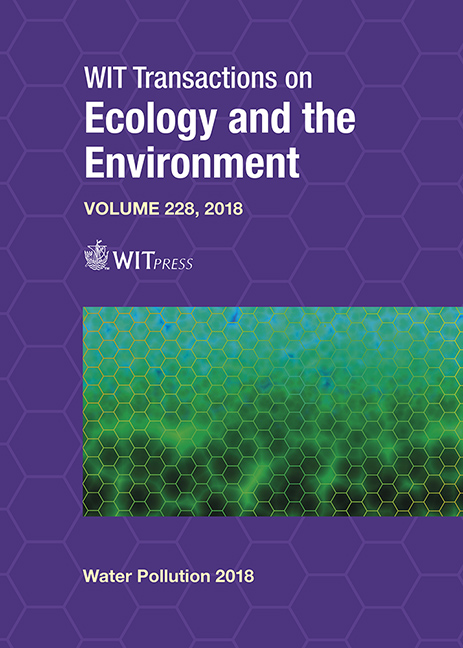PHYSICO-CHEMICAL AND SURFACE CHARACTERISATION OF A RENEWABLE LOW-COST BIOSORBENT FOR THE UPTAKE OF HEAVY METAL IONS FROM AQUEOUS SOLUTION
Price
Free (open access)
Transaction
Volume
228
Pages
11
Page Range
317 - 327
Published
2018
Size
513 kb
Paper DOI
10.2495/WP180301
Copyright
WIT Press
Author(s)
JOHN O. ODIYO, JOSHUA N. EDOKPAYI
Abstract
The persistence and toxicity of heavy metals in the environment is of global concern. Powdered biomass from the stem of Diceriocaryum eriocarpum plant (DEP) was characterised and applied as a possible biosorbent for the uptake of Pb(II), Cu(II) and Cr(VI) from aqueous solution. The bulk density and moisture content of DEP stem were found to be 0.7026 g/mL and 5.36%, respectively. Thermogravimetric analysis showed the stability of the biosorbent up to 200°C. Results from scanning electron microscopy (SEM) showed a flasky and crack filled surface morphology. The Brunauer-Emmett Teller (BET) isotherm gave a total surface area of 2.5052 m2/g. XRF analysis revealed the presence of calcium as the major element present. Experimental data from Fourier-Transform Infra-red spectrometer indicated the presence of hydroxyl, carbonyl, amino and nitro functional groups. The biosorbent showed 95.4%, 54.9% and 16.3% uptake efficiencies for Pb(II), Cr(VI) and Cu(II), respectively. Kinetic data for the biosorption of Pb(II) gave a Pseudo-second order as the best fitting kinetic model. The equilibrium data obtained best fitted into the Freundlich isotherm model (R = 0.99) than the Langmuir (R = 0.98) model. Powdered stem from DEP is a suitable biosorbent for the uptake of heavy metals from aqueous solution.
Keywords
biosorbent, bulk density, DEP, environment, Freundlich, heavy metals, kinetics, Langmuir, remediation, wastewater





